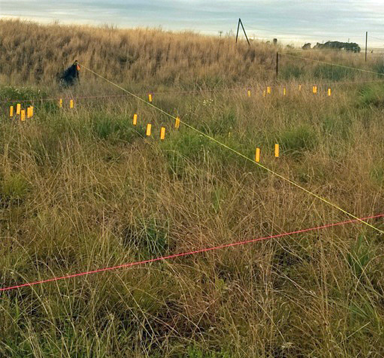Research outcomes
We investigated morphology, phylogenetic variability, and growth of several fungal isolates associated with a rare and a widespread orchid belonging to the same genus (D. punctata and D. fragrantissima). Morphological examinations yielded the observation of many vegetative and asexual characters, however no sexual spores. Sequence analysis of fungal barcoding and multi-locus markers identified clonal species within the isolates, and determined narrow monophyly among fungi from both orchid species. Finally, growth studies led to the development of a lysate–protein concentration method for assessing fungal growth. This method was later used to reliably determine increased growth in the fungal culture isolated from the common orchid species.
The in situ sampling targeted a site in the Mornington Peninsula rich in orchid species, including the D. fragrantissima-sister orchid D. punctata. Following DNA extraction and NGS DNA sequencing, the fungal community associated with bulk and orchid rhizosphere soil was characterised. However, no Tulasnella species were retrieved with the molecular method implemented in this study. As the suitability of the NGS approach to identify mycorrhizal fungi in soil has been tested and demonstrated in our previous studies (Egidi et al. 2018), the lack of retrieval of Tulasnella sp. sequences may be due to the seasonality of the occurrence of mycorrhizal fungi in soil and provides to option in the future to test seasonal suitability for reintroduction.
Completed Honours research thesis:
K. Aedo: “Characterising Tulasnella sp. mycorrhizal fungus isolates from two Australian Diuris species: fungal roles in endangered orchid conservation”, La Trobe University

